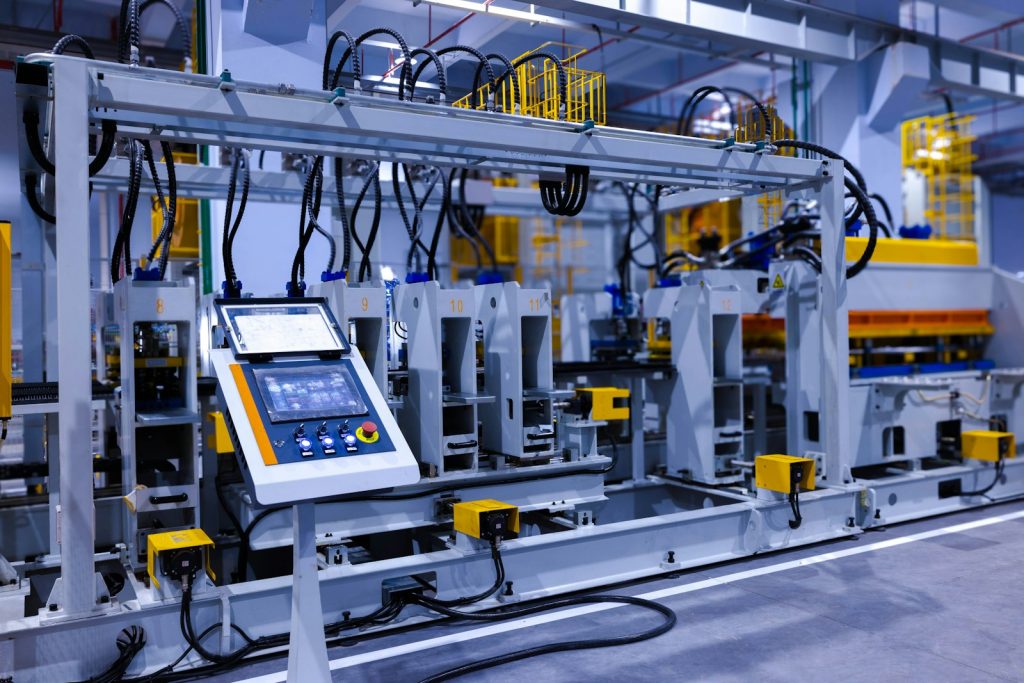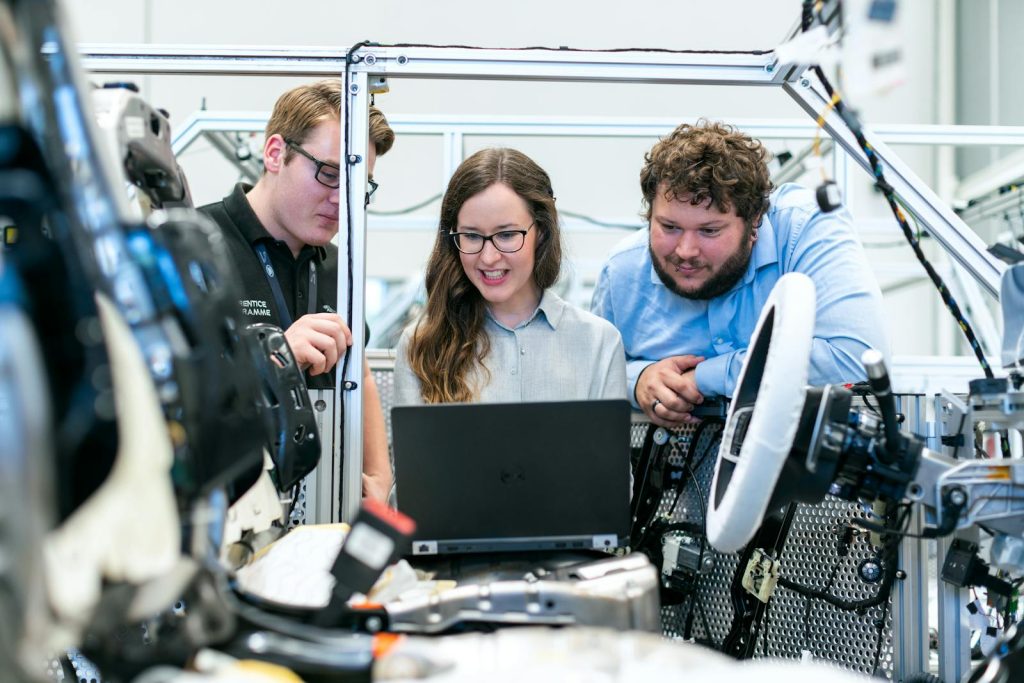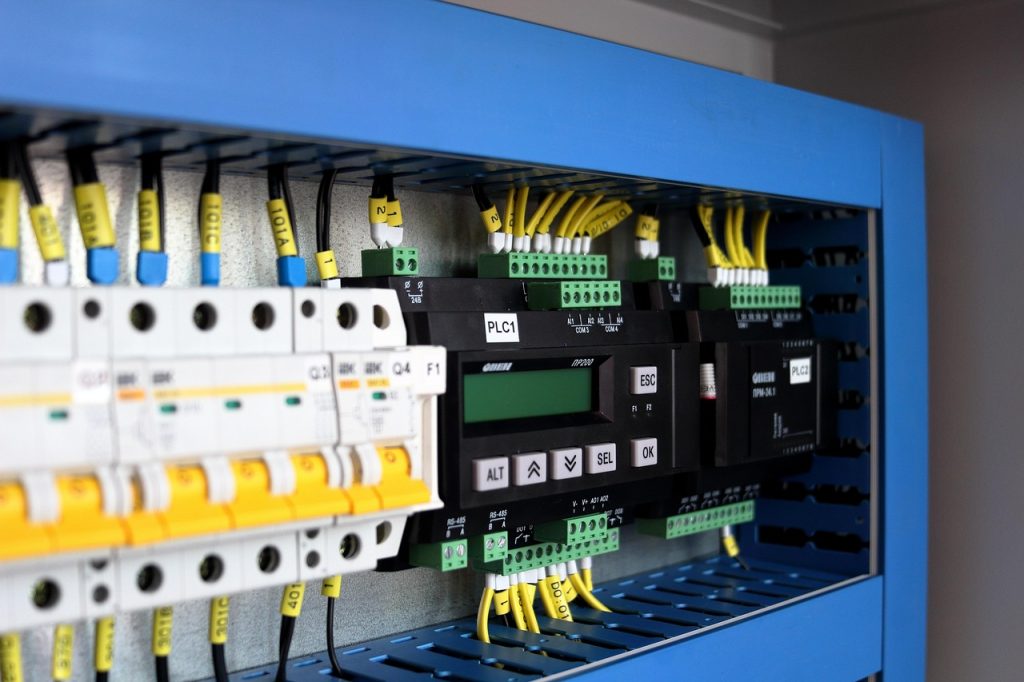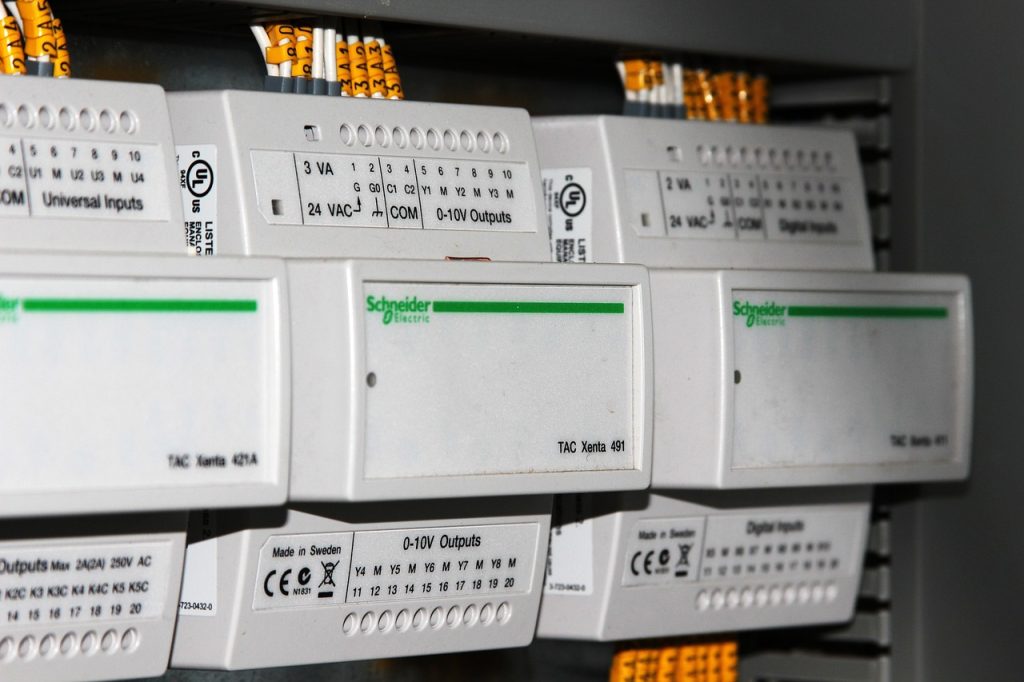Programming PLC Controllers: A Comprehensive Guide to Industrial Automation Proficiency

PLC controller programming is becoming one of the most in-demand abilities in the industrial sector, as the globe quickly moves toward smart production. Knowing how to program a Programmable Logic Controller (PLC) can help you advance your career, find high-paying employment, and put you at the center of the Industry 4.0 revolution, regardless of your level of automation experience.
From the fundamentals to more complex methods, this tutorial is designed to help you grasp PLC controller programming and the reasons it is becoming so popular in the US.
PLC Controller Programming: What Is It?
The process of developing, modifying, and overseeing software instructions that regulate equipment and procedures in industrial environments is known as PLC controller programming. A ruggedised computer called a PLC (Programmable Logic Controller) is used to automate electromechanical processes in manufacturing facilities, assembly lines, oil refineries, and water treatment systems.
PLCs, as opposed to standard computers, are made for real-time operations and severe settings. Writing logic that controls how machines react to particular inputs—such as sensors, switches, or timers—and outputs—such as motors, relays, or actuators—is the process of programming a PLC.
The Significance of PLC Controller Programming

The development of IoT-integrated systems and smart factories has made PLC controller programming crucial to industrial automation. This is why it is more important than ever:
It powers the foundation of production: PLC logic is used in practically every manufacturing process, from food packaging to auto assembly.
It lowers downtime and human error: PLCs that are properly programmed guarantee smooth, effective, and error-free operations.
In the USA, it offers a high demand for careers: states like Texas, Michigan, Ohio, and California are experiencing an increasing scarcity of qualified PLC programmers as more businesses automate.
It guarantees compliance and safety: machines are equipped with essential safety precautions through logic programming.
How Does Programming a PLC Controller Operate?
How Does Programming a PLC Controller Operate?
Programming PLC controllers is really about creating logic. Here’s a basic rundown of how it operates:
The PLC receives signals from input devices, such as switches and sensors.
The PLC uses predetermined logic (written in software) to process those inputs.
It turns on output devices, such as motors, alarms, or valves, based on the logic.
Typical Languages for PLC Programming
You will come across a number of programming languages when learning to program PLC controllers, but the most popular ones are:
Electrical relay logic is similar to ladder logic (LD). For technicians and electricians, ideal.
Function Block Diagram (FBD): Common in process control, this diagram uses blocks for functions.
Structured Text (ST): Advanced programming languages such as C or Pascal.
Instruction List (IL): Mostly out-of-date assembly-style instructions.
The steps in a sequence are represented visually in a sequential function chart (SFC).
Things You Need to Understand Before Programming

Prior to beginning PLC controller programming, you must have a firm grasp of the following software and hardware elements:
The central processing unit, or CPU, is the PLC’s brain.
I/O modules serve as a conduit between external devices and the PLC.
Unit of Power Supply
A PC or HMI (Human Machine Interface) is typically used as a programming device.
Programming software includes Omron CX-One, Allen Bradley RSLogix 5000, and Siemens TIA Portal.
How to Study Programming for PLC Controllers Online in the USA
You may now learn PLC controller programming from home with top-notch online courses thanks to modern technologies. Comprehensive PLC programming training is available on platforms such as Udemy, Coursera, LinkedIn Learning, and RealPars, ranging from basic to advanced.
The Best Online Courses to Take: Udemy’s “PLC Programming from Scratch”
The Phoenix Contact product “PLCnext Technology”
Coursera’s “Introduction to PLCs and Automation”
Siemens PLC Programming Made Easy with RealPars
To help you practice PLC controller programming without actual hardware, these courses include downloadable tools, software simulators, and real-world applications.
Typical Equipment and Software for PLC Programming
These are the most popular tools for programming PLC controllers, depending on the brand:
Software for PLC Brand Programming
Studio 5000 and RSLogix 5000 from Allen-Bradley (AB)
Step 7 of the Siemens TIA Portal
Schneider Electric GX Works, GX Developer, Omron CX-One EcoStruxure Machine Expert
Logic simulation, diagnostics, HMI configuration, and protocol integration are just a few of the functions that these software tools offer and are essential for efficient PLC controller development.
Applications of PLC Controller Programming in the Real World

All of the major industries in the United States use PLC controller programming. Here’s where you may observe it in operation:
Assembly lines for automobiles (Ford, Tesla, GM)
Food and Drink Containers
Pipelines for Gas and Oil
Manufacturing of Pharmaceuticals
Treatment Facilities for Water and Wastewater
Systems for Renewable Energy (Wind and Solar Farms)
Systems for Handling Baggage at Airports
PLC controller programming is the unsung hero that keeps everything working smoothly wherever machines are operated with timing and precision.
PLC Controller Programming-Related Course in USA
The following course in the USA will help you
Programming PLC controllers
Online instruction in PLC controller programming
USA PLC programming course
Programming lesson for Allen Bradley PLCs
Programming Siemens PLC controllers
Top certifications for PLC programming
An introduction to programming PLC controllers
Jobs in the USA for PLC programming
PLC training for industrial automation
Examples of PLC controller programming
Advice for Getting the Hang of PLC Controller Programming
The following professional advice will help you succeed:
Let us start with Ladder Logic, which is the most popular and easy to understand.
Utilize Simulators: Get comfortable using programs such as Factory I/O or LogixPro.
Construct Real Projects: Construct traffic light or conveyor belt simulations.
Examine Current Programs: Gain knowledge from real-world examples.
Participate in Online Communities: Discord servers, LinkedIn groups, and PLC Reddit forums.
Obtain Certifications: Select accredited qualifications from Siemens, Rockwell, or ISA.
Keep Up: Keep studying as automation changes!
Concluding Remarks: Why Programming PLC Controllers Is the Future

PLC controller programming is more than simply a technical ability in the era of smart manufacturing and digital transformation; it is a springboard to a lucrative, cutting-edge profession. Gaining proficiency in PLC controller programming can position you at the vanguard of industrial automation, regardless of your level of experience.
The greatest time to enter this sector is now because of the flexibility of online learning, the wealth of tools and simulators, and the growing industry demand throughout the USA.
Get educated. Get the programming started. Because PLC controller programming is the intersection of technology and opportunity, begin automating your future.

1 thought on “PLC Controller Programming”